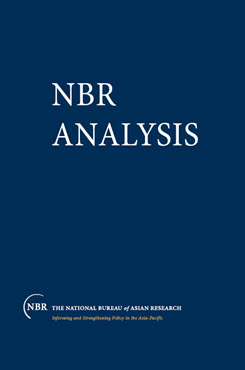China and the WTO
The Politics Behind the Agreement
On November 15, 1999, the United States and China finally signed a landmark agreement on China’s accession to the WTO. The agreement on China’s entry into the WTO will rank with President Nixon’s 1972 visit to Beijing and President Carter’s extension of diplomatic recognition to China as a major step in bringing China into the world.
Chinese leaders in favor of China’s greater integration into the world economy were thrown on the defensive in April 1999 by the U.S. rejection of China’s unprecedentedly forthcoming offer for joining the World Trade Organization (WTO) and by the bombing of the Chinese embassy in Belgrade in May. The events of April and May raised the WTO issue from the already difficult arena of bureaucratic politics to the often brutal realm of elite politics. Although Premier Zhu Rongji bore the brunt of public criticism, President Jiang Zemin similarly came under attack by nationalistic opposition leaders for “selling out the country” and being soft on the United States. Jiang has spent much of the time since then defending himself and rebuilding support for joining the WTO. The Clinton Administration, realizing its miscalculation in April, similarly spent the next six months working to repair U.S.–China relations in order to bring China back to the negotiating table.
On November 15, 1999, the United States and China finally signed a landmark agreement on China’s accession to the WTO. Without the efforts from both China and the United States to repair the damage done in the spring, an agreement would have been delayed indefinitely. The agreement on China’s entry into the WTO will rank with President Nixon’s 1972 visit to Beijing and President Carter’s extension of diplomatic recognition to China as a major step in bringing China into the world. It will help stabilize China’s relations with the major powers—most particularly the United States—and burnish Jiang Zemin’s (and perhaps Zhu Rongji’s) leadership credentials. Most importantly, it will reinforce domestic reform and lead China to play an increasingly constructive role in world affairs.
On April 6, 1999, Chinese Premier Zhu Rongji arrived in the United States to try to clinch a deal on China’s membership in the World Trade Organization (WTO). The People’s Republic of China (PRC) had originally applied for membership in the WTO’s predecessor organization, the General Agreement on Tariffs and Trade (GATT) in 1986. Progress on an agreement was interrupted by the Tiananmen Square incident in 1989, and subsequent disagreements over market access, intellectual property rights, and other matters repeatedly thwarted prospects for a deal in the years since. By the time Zhu Rongji came to the United States in 1999, however, there was reason to believe that an agreement could be reached. Chinese leaders were suggesting greater flexibility, and…


